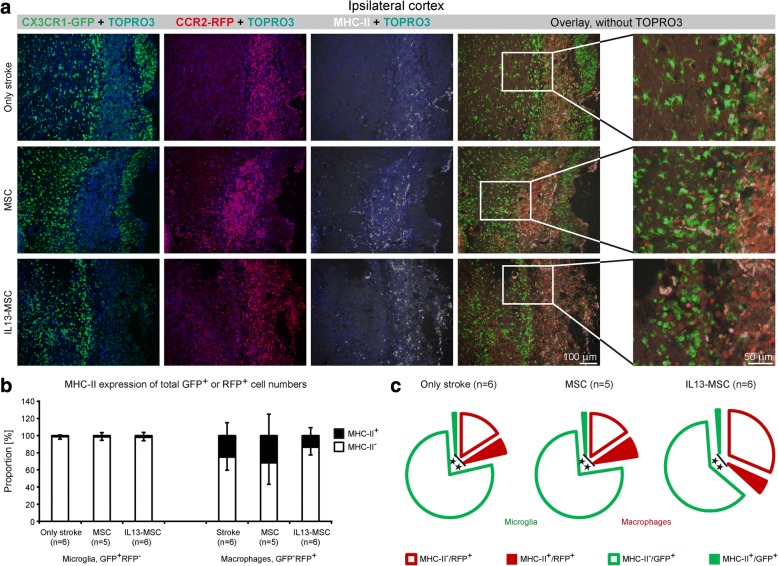Fig. 8.
Transplantation of IL13-producing MSCs switches the polarization of microglia and macrophages towards less pro-inflammatory condition at day 14 after ischemic stroke. a Representative fluorescent microscopic images of ischemic cortical region show the expression of MHC-II on CX3CR1eGFP/+ and CCR2RFP/+ cells in all three experimental groups at day 14 after stroke. Illustrative ×20 close-up magnification displays the changes in MHC-II expression by microglia and macrophages. Immunofluorescence colors: blue, TOPRO; green, microglia; red, macrophages; white, MHC-II. b Detailed phenotypic quantitative analysis of CX3CR1eGFP/+ and CCR2RFP/+ cells expressing MHC-II showed a significant difference in the number of macrophages expressing MHCII, GFP−RFP+MHC-II+, in comparison to the number of microglia expressing MHC-II, GFP+RFP−MHC-II+, in all three experimental groups. In IL13-MSC-treated group, a trend towards less MHC-II expression by CCR2RFP/+ macrophages was detected, in comparison to both control groups. c The corresponding exploded pie charts show the distribution of MHC-II expression by GFP+ and RFP+ cells in all three experimental groups. In the pie chart, GFP+ microglia and RFP+ macrophages are encircled in green and red, respectively. In all three groups, the MHC-II+ fraction of macrophages is significantly higher than that of microglia. n = 5–6 mice in each group. Data represent mean ± SD. The data were compared between the three experimental groups using a parametric one-way ANOVA test with Bonferroni’s post hoc test

